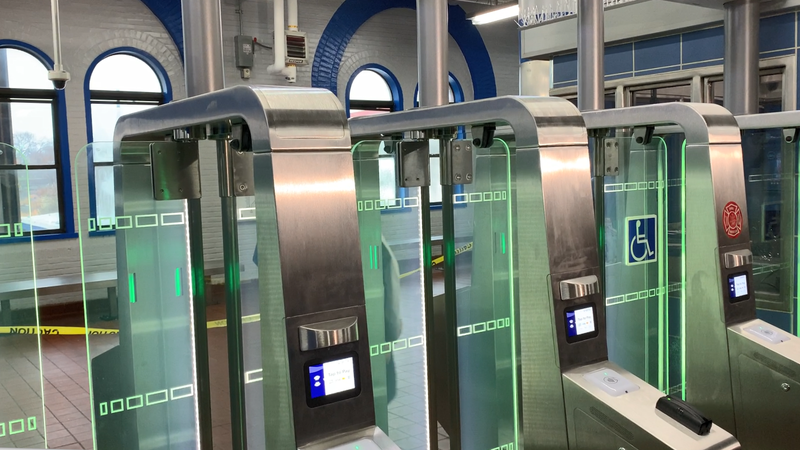
PHILADELPHIA (KYW Newsradio) — SEPTA is getting ready to expand its inventory of new vertical gates designed to deter fare evaders. A pilot program began in April with a dozen of the gates at the 69th Street Transportation Center. SEPTA admits they're not perfect, but they have proven so effective that the transit agency is ready to buy 100 more.
SEPTA in May reported revenues up at the station, corresponding to a doubling of Quick Trip sales and contactless fare payment. The SEPTA Board next week will consider a $7 million contract with Conduent Transport Solutions to buy more of the new gates for selected stations along the Market-Frankford Line, now called the L.
SEPTA Chief of Staff Liz Smith told the board's operations committee Thursday that the new gates at 69th Street provide data on how many people skip fares.
"Before we were watching video and analyzing turnstiles to try and manually count how many people were doing things like that. Now, we get a report every morning and we know," Smith said.
Smith told the board the new gates capture 3D video when someone piggybacks on someone else’s fare to get through a gate — a phenomenon she calls “tailgating.”
"So we can see when someone is walking through an open ADA gate when they haven't tapped and they aren't a paid customer."
She said another benefit of the new data is a more efficient deployment of patrol resources. Now that the Transit Police Department knows the days, times and locations fare evasion tends to happen most often, they can focus officers in those areas at those times.
"We have seen that as a successful measure. When the Transit Police are standing at the gates, that type of fare evasion rarely happens."
Should the Conduent Transport Solutions contract be approved, the gates will be installed first in stations where the problem is worst.
"What we've done is used a very data-driven approach so that these gates are going into stations with the highest number of fare evaders and ones that the Transit Police have identified."
It's a big issue for SEPTA, which estimates losses of $30 million to $40 million a year from people who jump the turnstiles and don't pay.
